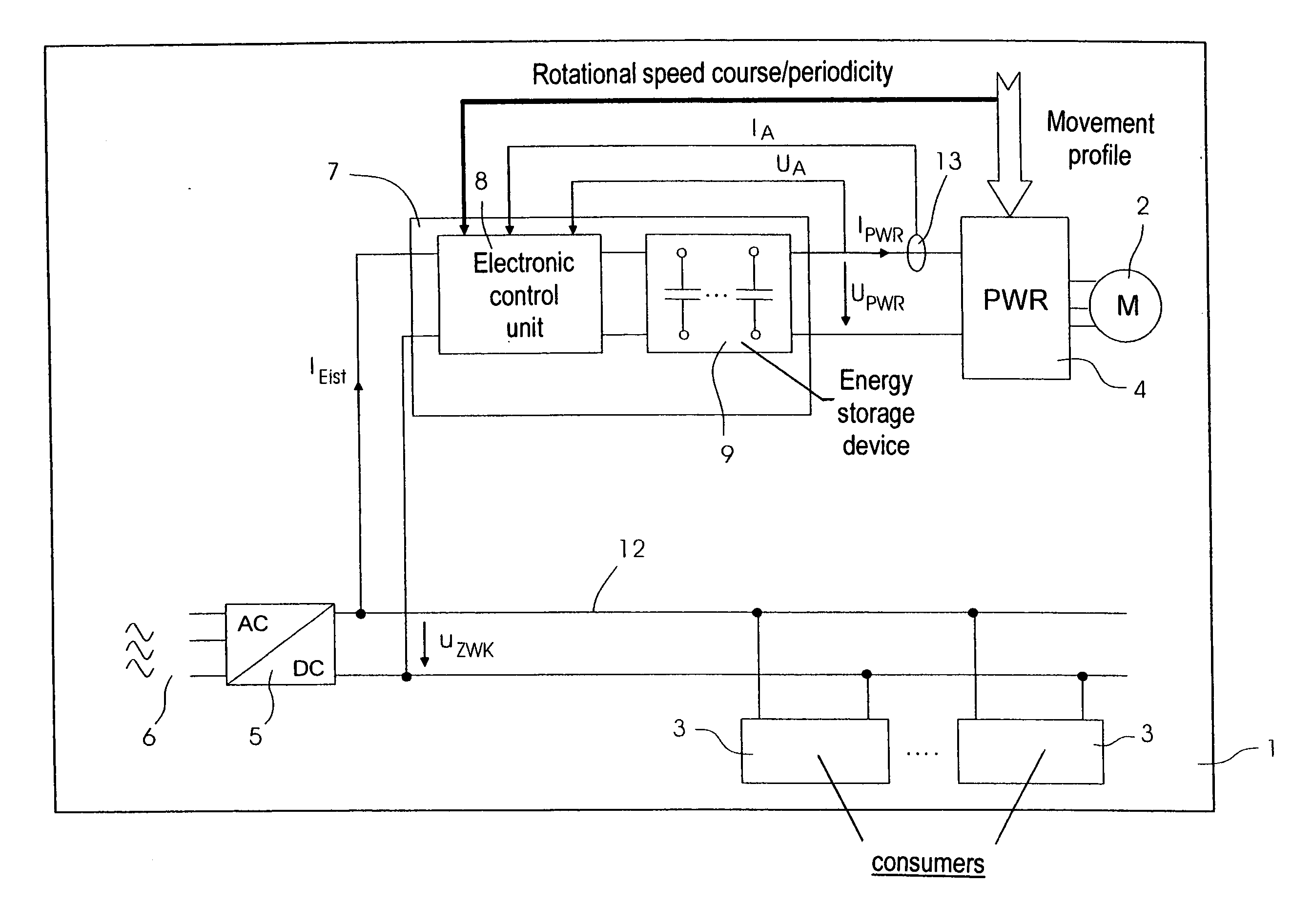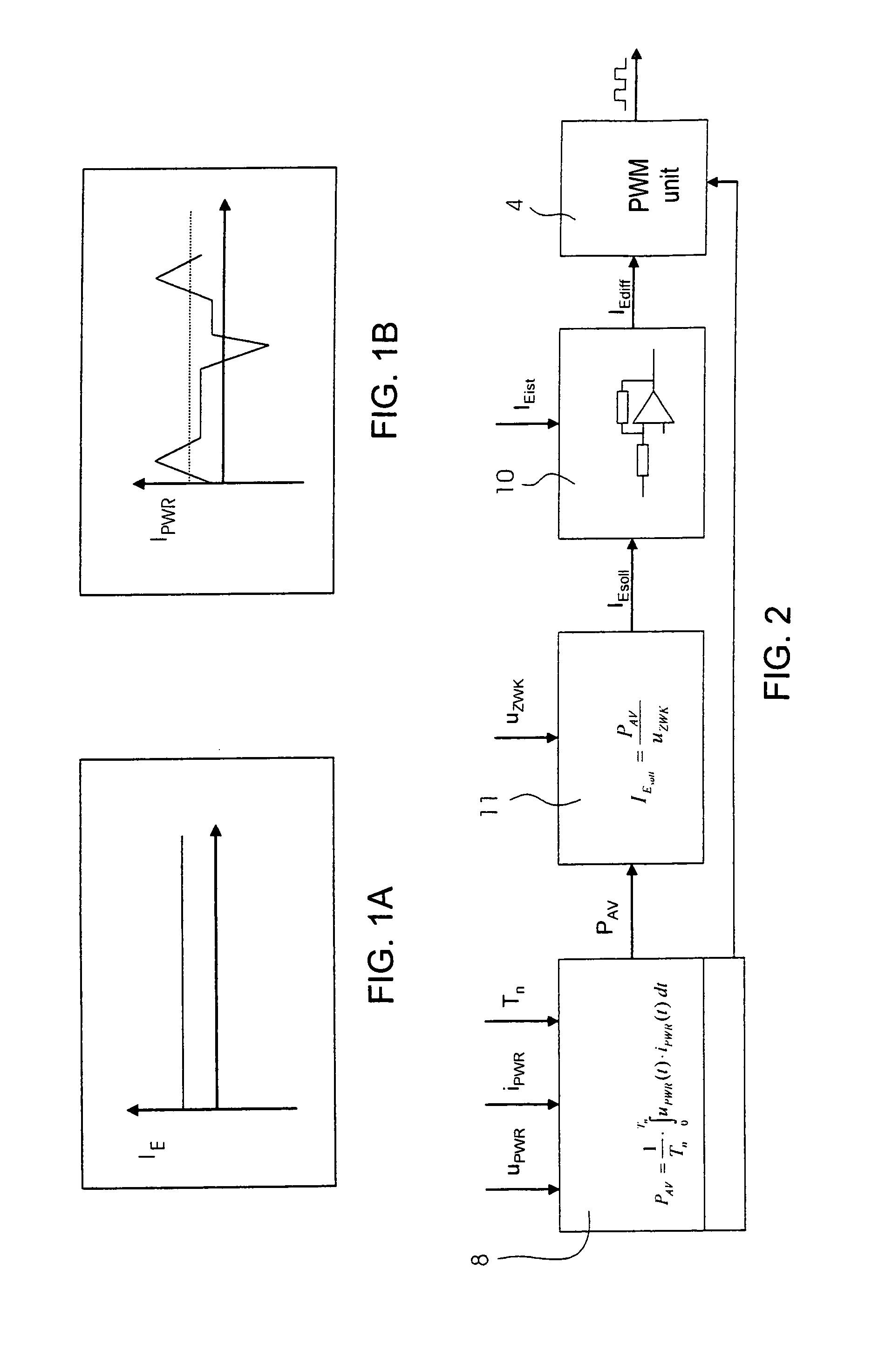Device for the controlled power consumption of electric drives in machinery and machine including the device for processing printing material
a technology of electric drives and machines, applied in the direction of motors/generators/converter stoppers, dynamo-electric converter control, instruments, etc., can solve the problem of power consumption that is still lower than the acceptable peak load limit than the initial demand taken from the power system
- Summary
- Abstract
- Description
- Claims
- Application Information
AI Technical Summary
Benefits of technology
Problems solved by technology
Method used
Image
Examples
Embodiment Construction
[0025]Referring now to the figures of the drawing in detail and first, particularly, to FIG. 1 thereof, there is seen a printing press 1 with a number of power consumers 3, one of which is illustrated in greater detail as an electric motor 2. The further direct current consumers 3 may also be electric motors. The direct current consumers 3 and the electric motor 2 are connected to a direct current voltage link circuit or DC circuit 12 of the printing press 1. This direct current voltage link circuit 12 is the highest power supply level of the printing press 1. A rectifier 5 connects the printing press 1 to a 400-Volt three-phase power supply system 6. The rectifier 5 ensures that a link circuit voltage uZWK in the direct current voltage link circuit 12 remains as constant as possible. The electric motor 2 in FIG. 1 is electronically controlled and supplied with power through an inverter 4 for four-quadrant operation. The inverter 4 allows continuous adjustment of the rotational spee...
PUM
 Login to View More
Login to View More Abstract
Description
Claims
Application Information
 Login to View More
Login to View More - R&D
- Intellectual Property
- Life Sciences
- Materials
- Tech Scout
- Unparalleled Data Quality
- Higher Quality Content
- 60% Fewer Hallucinations
Browse by: Latest US Patents, China's latest patents, Technical Efficacy Thesaurus, Application Domain, Technology Topic, Popular Technical Reports.
© 2025 PatSnap. All rights reserved.Legal|Privacy policy|Modern Slavery Act Transparency Statement|Sitemap|About US| Contact US: help@patsnap.com



